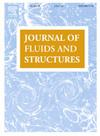后颤振控制中扑翼- nes被动吸收器的实验参数研究
IF 3.5
2区 工程技术
Q1 ENGINEERING, MECHANICAL
引用次数: 0
摘要
气动弹性不稳定性对飞机设计提出了重大挑战,特别是对于利用高展弦比和柔性机翼来提高气动效率的新型设计。在高空、高耐力飞机和商用客机上都可以看到这些进步,但这些进步带来了复杂性,如低谐振频率和对气动弹性不稳定性(特别是颤振)的敏感性增加,这可能导致结构失效。目前的认证过程要求飞机在运行飞行包线内外无颤振,通常安全裕度为15%,已经探索了各种策略来减轻颤振和扩大飞行包线。在这项工作中,被动减振应用于一个具有复杂气动弹性不稳定性的风洞实验气动弹性系统。该系统由一个刚性机翼和一个翼展三分之一的襟翼组成,作为一个创新的非线性被动吸收器。该设置包含俯仰刚度非线性,导致复杂的气动弹性响应,如亚临界颤振和极限环振荡。这种解决方案得益于空气动力阻尼,并为系统增加了非常小的质量。本文的主要重点是评估襟翼- nes参数对气动弹性性能的影响,并探讨其对不同机翼构型的潜在影响。结果表明,在空速下,不稳定性的发作延迟高达34%,由于失速颤振引起的大振幅振动得到抑制,并且消除了亚临界行为。本文章由计算机程序翻译,如有差异,请以英文原文为准。
Experimental parametric study of a flap-NES passive absorber for post-flutter control
Aeroelastic instabilities present significant challenges in aircraft design, particularly for novel designs leveraging high aspect ratios and flexible wings to enhance aerodynamic efficiency. These advancements, seen in both high-altitude, high-endurance aircraft and commercial airliners, introduce complexities such as low resonant frequencies and increased susceptibility to aeroelastic instabilities, particularly flutter, which can lead to structural failure. The current certification process requires aircraft to be free from flutter within the operational flight envelope and beyond it, typically with a safety margin of 15% Various strategies have been explored to mitigate flutter and expand the flight envelope. In this work, passive vibration mitigation is applied to an experimental aeroelastic system exhibiting complex aeroelastic instabilities in a wind tunnel. The system consists of a rigid wing mounted on elastic supports with a flap that spans one-third of the wingspan and acts as an innovative nonlinear passive absorber. The setup includes pitch stiffness nonlinearity, which contributes to complex aeroelastic responses such as subcritical flutter and limit cycle oscillations. This solution benefits from aerodynamic damping and adds a very small amount of mass to the system. The main focus of this paper is to assess the influence of flap-NES parameters on aeroelastic behavior and to explore its potential impact on different wing configurations. Results show a delay in the onset of instability up to 34% in airspeed, a suppression of large amplitude vibrations due to stall flutter, and a removal of subcritical behavior.
求助全文
通过发布文献求助,成功后即可免费获取论文全文。
去求助
来源期刊

Journal of Fluids and Structures
工程技术-工程:机械
CiteScore
6.90
自引率
8.30%
发文量
173
审稿时长
65 days
期刊介绍:
The Journal of Fluids and Structures serves as a focal point and a forum for the exchange of ideas, for the many kinds of specialists and practitioners concerned with fluid–structure interactions and the dynamics of systems related thereto, in any field. One of its aims is to foster the cross–fertilization of ideas, methods and techniques in the various disciplines involved.
The journal publishes papers that present original and significant contributions on all aspects of the mechanical interactions between fluids and solids, regardless of scale.
 求助内容:
求助内容: 应助结果提醒方式:
应助结果提醒方式:


